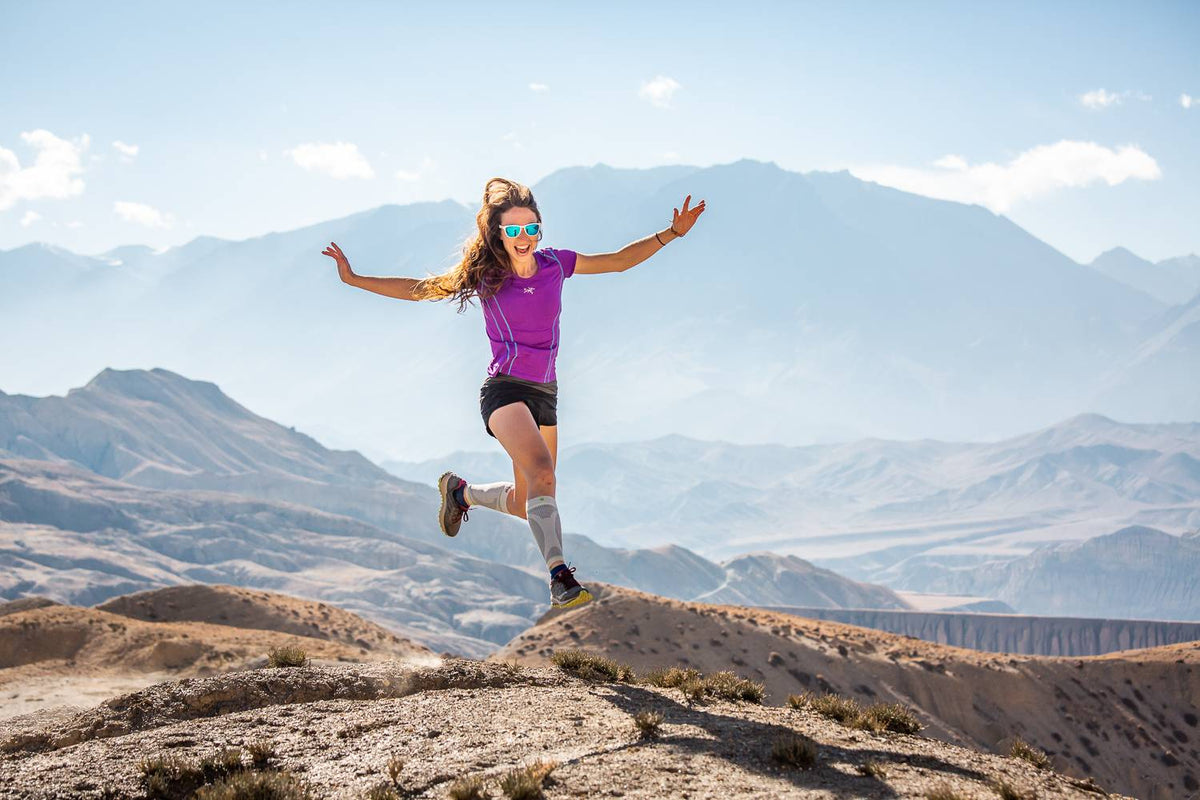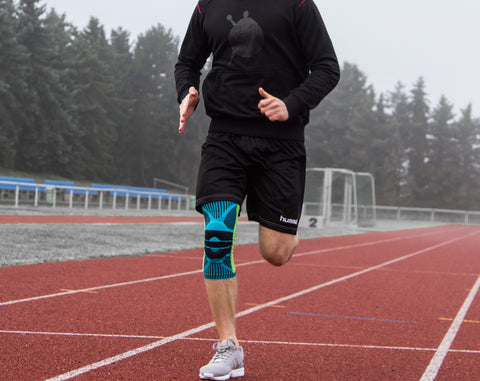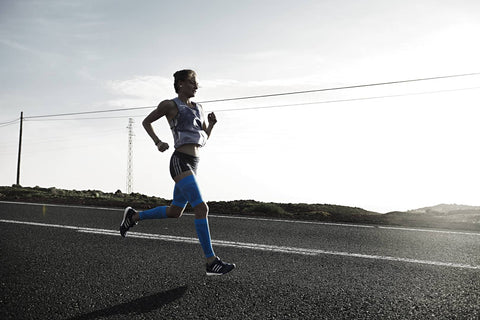Best Running Gear to Help You Stick to Your New Year’s Fitness Resolutions

Running is a great way to get the blood pumping and get fit. So, it’s no surprise that it’s a pretty popular New Year’s Resolution. And if you’re planning on taking up the sport in the new year, here is the best running gear to help you improve your performance and recovery time (and stick to your mileage goals).
1. Run Performance Insoles
You might be thinking, “I have sneakers. Why would I need insoles?” Well, when you run, there’s a much higher demand on your foot than when you’re walking or doing other low-impact exercises.
Because the force with which your heel hits the ground is much higher, you need more cushioning. You also need a good amount of Achilles support so that your foot can efficiently roll and redistribute the force of your landing. If you don't meet these requirements, you risk premature muscle fatigue, heel pain, knee pain, and ankle sprains, especially if you’re aiming to run several Ks a day.
So, you’ll either need running shoes (and high-quality ones at that) or a pair of good sports insoles. Our Run Performance Insoles, for instance, have extra cushioning in the heel, arch support, and WeightFlex technology to support the natural roll of your foot and improve its sensorimotor function.
2. Sports Knee Support
Overuse injuries like Runner’s Knee are very common among runners. Bad form, poor bodily alignment, and an insufficient support structure around the knee joint can all exacerbate your risk.
Fortunately, the knees can adapt to the pressures of running. But there are some steps you can take to help the process along. The first is insoles or running shoes because good knee traction and sensorimotor function begin in the foot. The second is knee strengthening exercises. And the third is a quality knee brace.
Our Sports Knee Support, for example, incorporates medical-grade compression and a special gel pad at the patella. Basically, this system activates key muscle groups around the knee, improving its natural support system and the way the joint tracks. And in turn, there’ll be less pressure on your tendons, helping you avoid tendonitis.
3. Calf Compression Sleeves
Arguably, calf compression sleeves are not as crucial as good foot or knee support. But they do have a few benefits:
- Boost venous return, which is the rate at which your veins pull blood out of your extremities and towards your heart. Better venous return means your muscles get oxygen and nutrients faster.
- Reduce muscle oscillation, which are the uncomfortable vibrations that shoot up your legs when your foot hits the ground
- Warm up your calf muscles, making them less prone to overuse injuries
- Prevent excess build-up of lactic acid, helping you avoid delayed onset muscle soreness. So especially if you plan on running every day, compression calf sleeves can come in handy for keeping you on track.
Some considerations when you’re picking out running gear
- Sizing is absolutely crucial. Whether it’s an insole, knee brace, or calf sleeve, it has to be the perfect fit for you. Anything less than perfect means you won’t get support where you need it, meaning your gear will be ineffective. That’s why we have sizing guides on every product page and a sizing system based on thousands of measurements taken from people all around the world - don't go generic!
- Quality is also fundamental. From padding to compression weave, you should opt for well-researched, medical-grade products. A neoprene brace just won’t have the same effect as a knit one. You get what you pay for.
- And finally, design. Just as not every brace is made equal, not every brace is made for the same thing. Our Sports Knee Support, for example, is great for protecting your knee while you run. But if you have a pre-existing knee injury, you’ll need a brace designed for it (like a GenuTrain S for mild to moderate injuries through to the SofTec Genu for a torn ligament).
Other tips for helping you stick to your running resolution

- Keep your goals realistic. If you’re just starting out, running 15k every day probably won’t be an achievable goal for you. And frustration is a surefire way to call it quits.
- Plan ahead and build a schedule. It takes 21 days to form a habit, and you’re much more likely to stick to an activity if you build it into a routine.
- Don’t push too hard. Your body needs time to rest and adjust. And as of yet, no brace or support can erase its need for that. So, take it steady and always listen to your body. Because even seemingly minor aches and pains can worsen into serious conditions.
To sum up
Running is great exercise. But to stick to your running goals in the new year, you’ll need to set achievable goals, build up a routine, and, of course, get the right running gear. And remember, while quality can be expensive and sizing can get tricky, the right gear is always worth it. It's your health we're talking about, after all.
Check out our full collection of running supports: Running Support - Running Support Braces
More information
If you require assistance selecting the right product for your needs or wearing the brace, call us on 098015660 or contact us via live chat.
Do you have private health? Most private health extras will cover Bauerfeind Products. Check to see if yours is included. Bauerfeind Private Health Insurance Inquiry.
Bauerfeind was founded in 1929, and since then, we've worked tirelessly to develop and improve our extensive range of braces, insoles, and compression products. Our mission is to provide you with top-of-the-line supports so you can reach your fitness goals or live life without pain holding you back.
Every product is produced entirely in our facilities in Germany with the guidance of doctors, clinics, and orthopaedic technicians.

